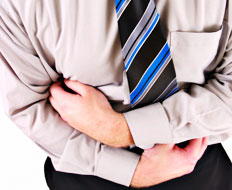When vomit, diarrhea, or other bodily excretions mar the environment in a quick-service restaurant, a rapid, well-planned response is imperative.
It’s essential to clean and disinfect the contaminated area promptly to prevent the spread of illness and protect the health of guests and employees.
“Vomit and fecal matter may contain disease-causing bacteria and viruses, including the highly contagious norovirus, that can easily spread via dirty hands and contaminated food and surfaces,” says Anna Starobin, M.D., Senior Scientist at Ecolab.
According to the Centers for Disease Control and Prevention (CDC), norovirus alone causes more than 21 million illnesseseach year in the U.S. and is responsible for at least 50 percent of all gastroenteritis outbreaks worldwide.The CDC estimates that more than three-quarters of the cases are spread person-to-person, and 15 percent are spread through food.
The frequency of vomiting and diarrheal events in restaurants and their potential impact on public health prompted the Food and Drug Administration (FDA) to publish the 2009 Food Code supplement, which emphasizes the need for a prepared recovery procedure for handling vomiting and diarrheal events.
“Effective clean-up of these events requires more stringent procedures than are generally used for routine cleaning and sanitizing,” Dr. Starobin says.
The key is disinfecting. Not only is it critical to have an effective disinfectant product readily available, it’s also important to use it in the proper concentration for the prescribed contact time. “The products you use to sanitize food-contact surfaces may not be effective against some viruses unless they are used at a higher concentration and, in many cases, for longer contact times,” Dr. Starobin says. “To choose an effective disinfectant, look for one of the many Environmental Protection Agency (EPA)-registered products with pathogen claims on their labels. Then follow the procedures for use on the label. Typically, the procedures are intended to address ‘worst-case’ scenarios, such as those that involve the hard-to-kill norovirus.”
After cleaning to remove soils, a chlorine bleach solution also may be used todisinfect potentially contaminated surfaces. The CDC recommends a solution of 1000–5000 ppm, which can be prepared by adding five to 25 tablespoons of household bleach per gallon of water for the effective disinfection of surfaces.
“Be careful when using bleach,” Dr. Starobin says. “Mixing it with any product containing ammonia will cause the release of toxic gas. Also, be aware that bleach can be corrosive to many metals and can damage other surfaces.
“If you’re uncertain about choosing the safest, most effective disinfectant for cleaning up vomit and other bodily fluids, reach out to the local public health department or your chemical supplier,” she says.
Disinfecting, though vitally important, is just one step in a thorough plan for recovery after a vomiting or diarrheal event, according to the FDA’s 2009 Food Code Supplement. As you develop your plan, the FDA recommends that you think through and develop procedures for:
- Determining the conditions under which the recovery plan will be put into action
- Determining when personal protective equipment should be worn
- Training employees in the procedures and proper use of equipment for cleaning and disinfecting areas potentially contaminated by vomit or diarrhea
- Containing and removing the contamination and minimizing its spread, even through the air
- Blocking off contaminated areas to reduce possible guest and employee exposure
- Making sure that effective disinfectant products—and other disinfecting tools and equipment—are readily available and easy to access
- Cleaning and disinfecting affected surfaces
- Evaluating and disposing of food or beverages that may have been exposed to contaminants
- Disinfecting or, even better, disposing of the tools and equipment used in the clean up.
“Having a well thought-out plan and being prepared to execute it are critical to the safety of your guests,” Dr. Starobin says. “When it comes to vomiting and diarrheal contamination in your restaurant, it isn’t a matter of ‘if;’ it’s a matter of ‘when.’ A plan that enables a rapid, effective response is definitely the best protection.”
By Dixie Berg for Ecolab













